Growing Tomatoes in the Heat of Summer
Avoid blossom drop during a hot, dry summer with these proven techniques
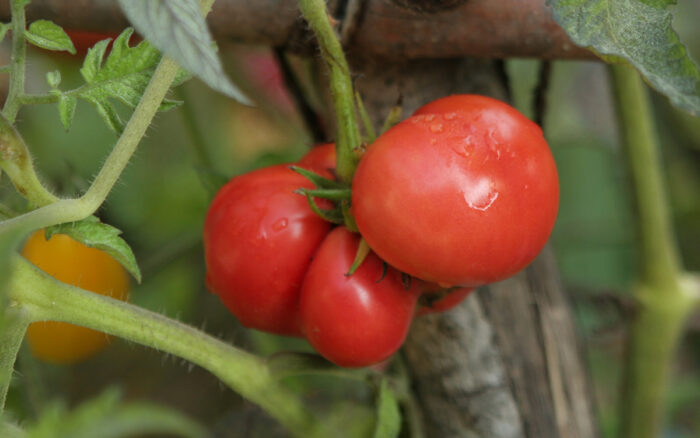
It’s the middle of summer. The tomato plants are lush and full. If you live in the Southern parts of North America, you harvested a great crop in June, but now the plants refuse to produce fruit. What went wrong?
You’ll be relieved to know this problem is not due to faulty gardening practices on your part, but rather the high temperatures of midsummer. While tomatoes love warm temperatures, they don’t do particularly well in very high heat. When temperatures soar, tomatoes often drop their flowers. This typically occurs when daytime temperatures exceed 90°F and nighttime temperatures exceed 70°F for several days in a row, which pretty much describes a typical summer week in the South. What’s a gardener to do?
Beat the heat with variety selection
First, let’s look at the issue of heat set for the two main type of tomato plants: determinate and indeterminate. Determinate tomatoes produce their full fruit load all at once, early in the season, typically before high temperatures dominate. Producing a crop early in the season is certainly one way to manage blossom drop. However, many home gardeners prefer indeterminate tomatoes that produce fruit all season long. For indeterminate tomatoes, blossom drop can be managed to some degree through plant selection.
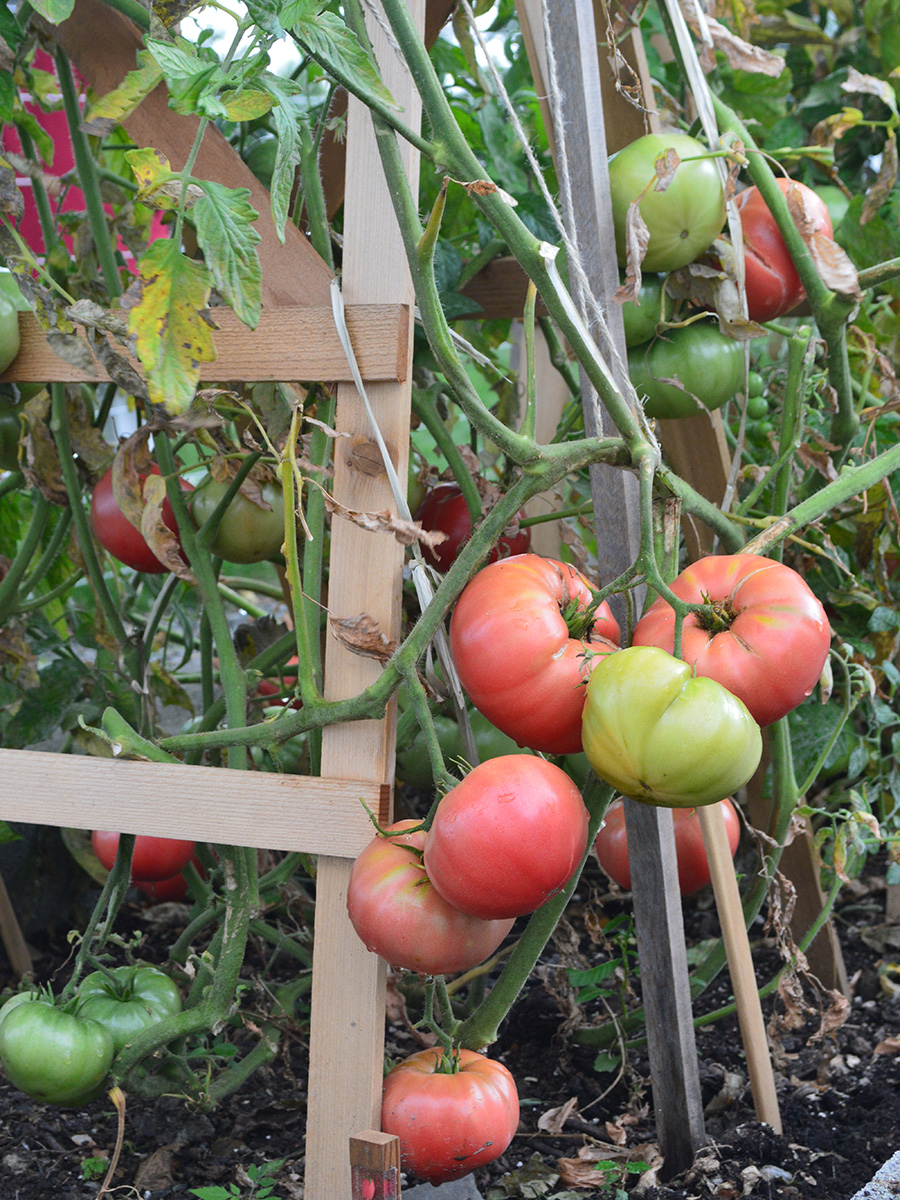
Some indeterminate heirloom varieties offer heat tolerance
Seek out varieties that demonstrate a high heat tolerance, such as ‘Costoluto’, an heirloom that produces large deep red fruits, and the beefsteak tomato ‘Brandywine’. ‘Traveler 76’ is an introduction from the Arkansas Horticulture Department selected for heat and drought resistance. Other popular varieties for hot climates include ‘Cherokee Purple’ and ‘Yellow Pear’.
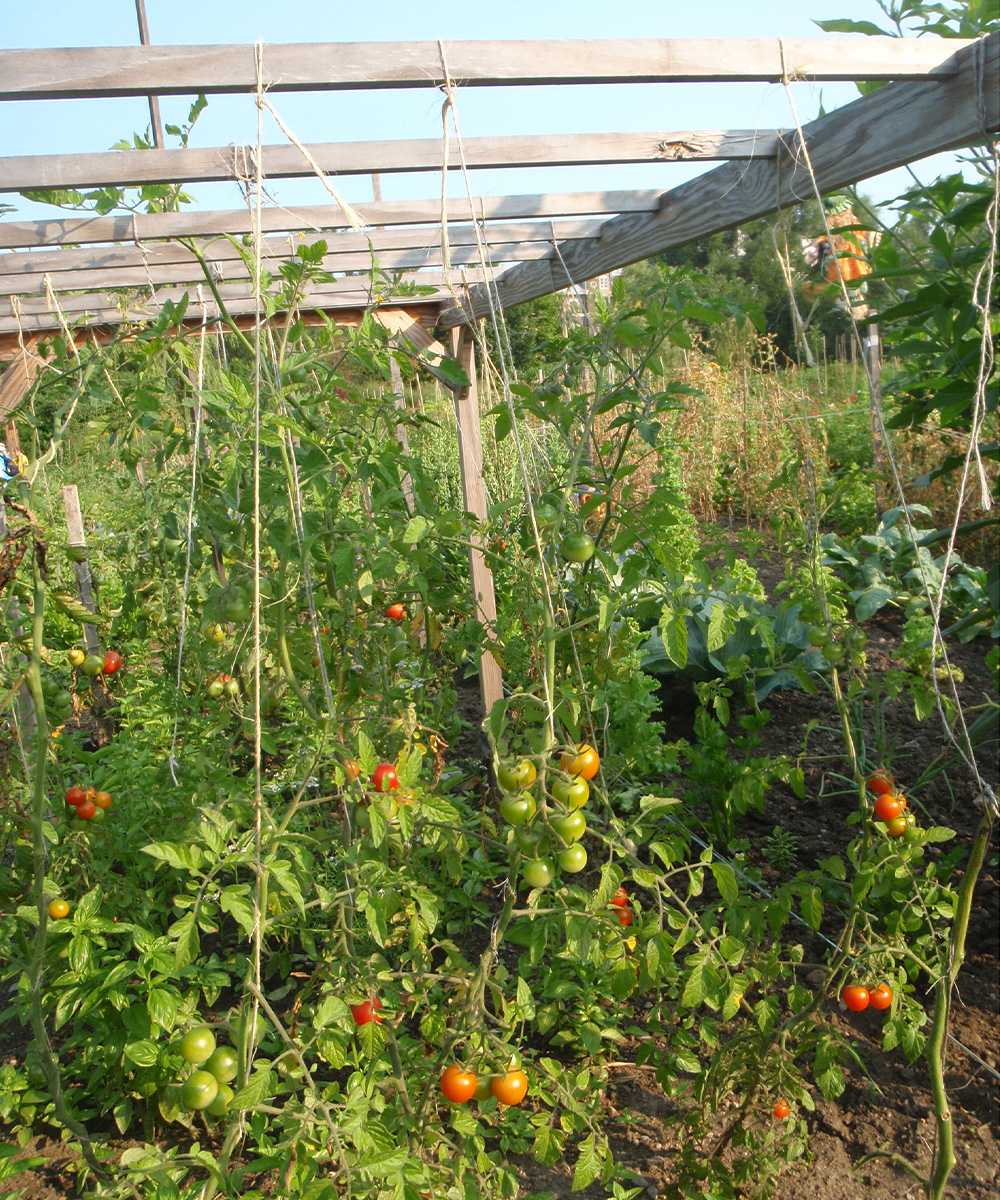
Some indeterminate hybrid varieties take the warm temps, too
Several popular hybrids, including ‘Big Beef’ and ‘Early Girl’, perform well in the heat. Though the variety ‘Celebrity’ has been around a while, it continues to set standards for quality production in hot climates. If you’re looking for a cherry tomato, the variety ‘Porter Improved’ is a hybrid with notable tolerance to heat and low humidity as well as disease resistance to verticillium and fusarium wilt. ‘Sweet Million’ and ‘Lollipop’ are other top performers.
Determinate variety options are limited, but do exist
Even determinate tomatoes do not always finish fruiting before the onset of high temperatures, so selecting heat-tolerant varieties is still important. ‘Heatwave II’ and ‘Homestead 24’ are two determinate tomatoes noted for their heat tolerance.
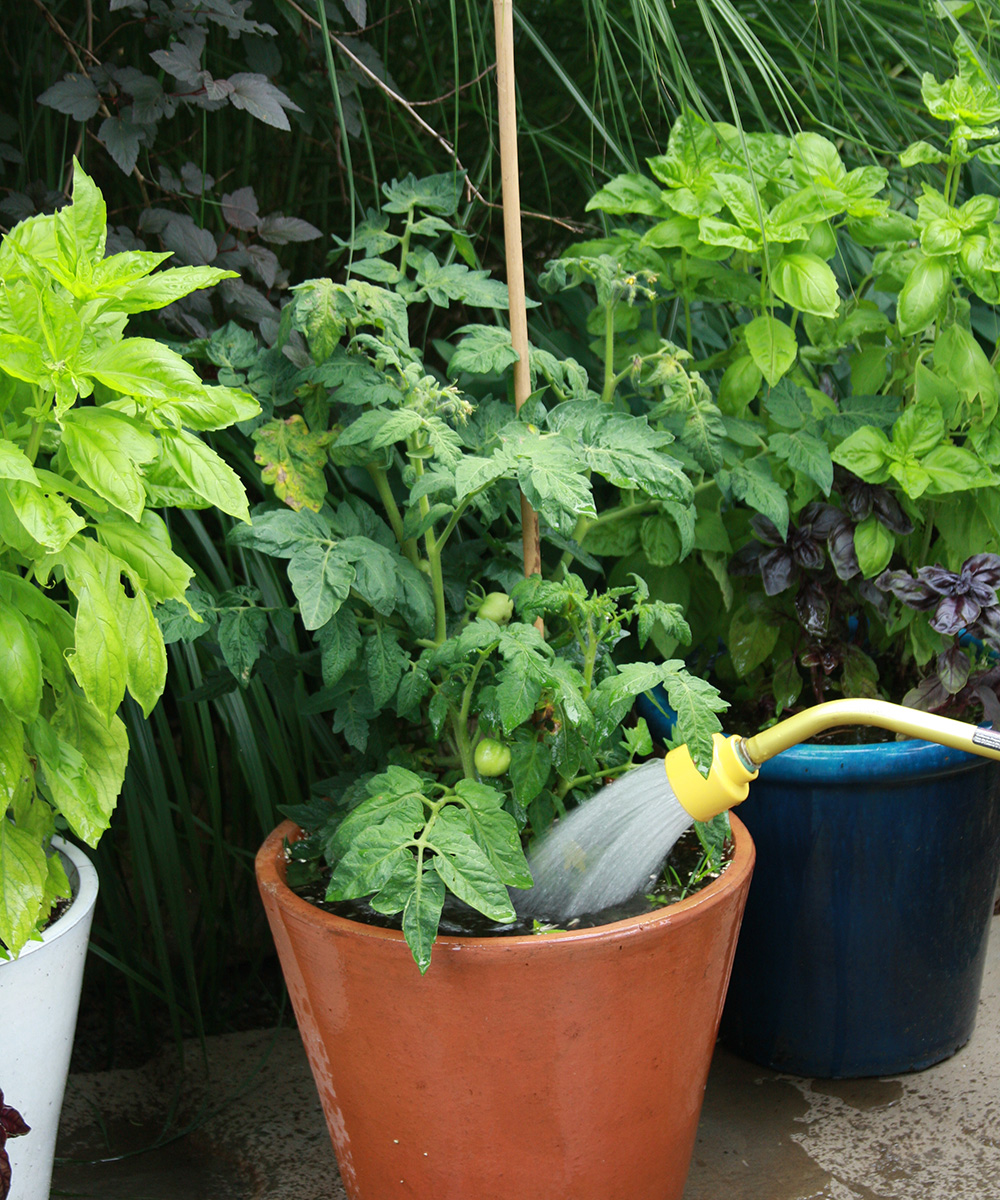
Tips for growing tomatoes in places with high heat
Provide some shade
In addition to cultivar selection, some gardeners use planting location or shade cloths to provide protection from afternoon heat. Most flowering in tomatoes occurs between 10 a.m. and 4 p.m., the hottest time of day. Shade cloths can help remove some of the stress and heat caused by the unrelenting sun. Choose a shade cloth with 20% to 40% light reduction. Or plant tomatoes where they will receive dappled shade during the afternoon. This will also protect maturing fruits from sunscald.
Choose the right fertilizer
Other factors that affect fruit production in tomatoes during the hot, dry days of summer are water and plant nutrients. Avoid excessive nitrogen fertilization during the heat of summer. When tomato plants receive an abundance of nitrogen, they put energy into excess vegetative growth at the expense of fruit set.
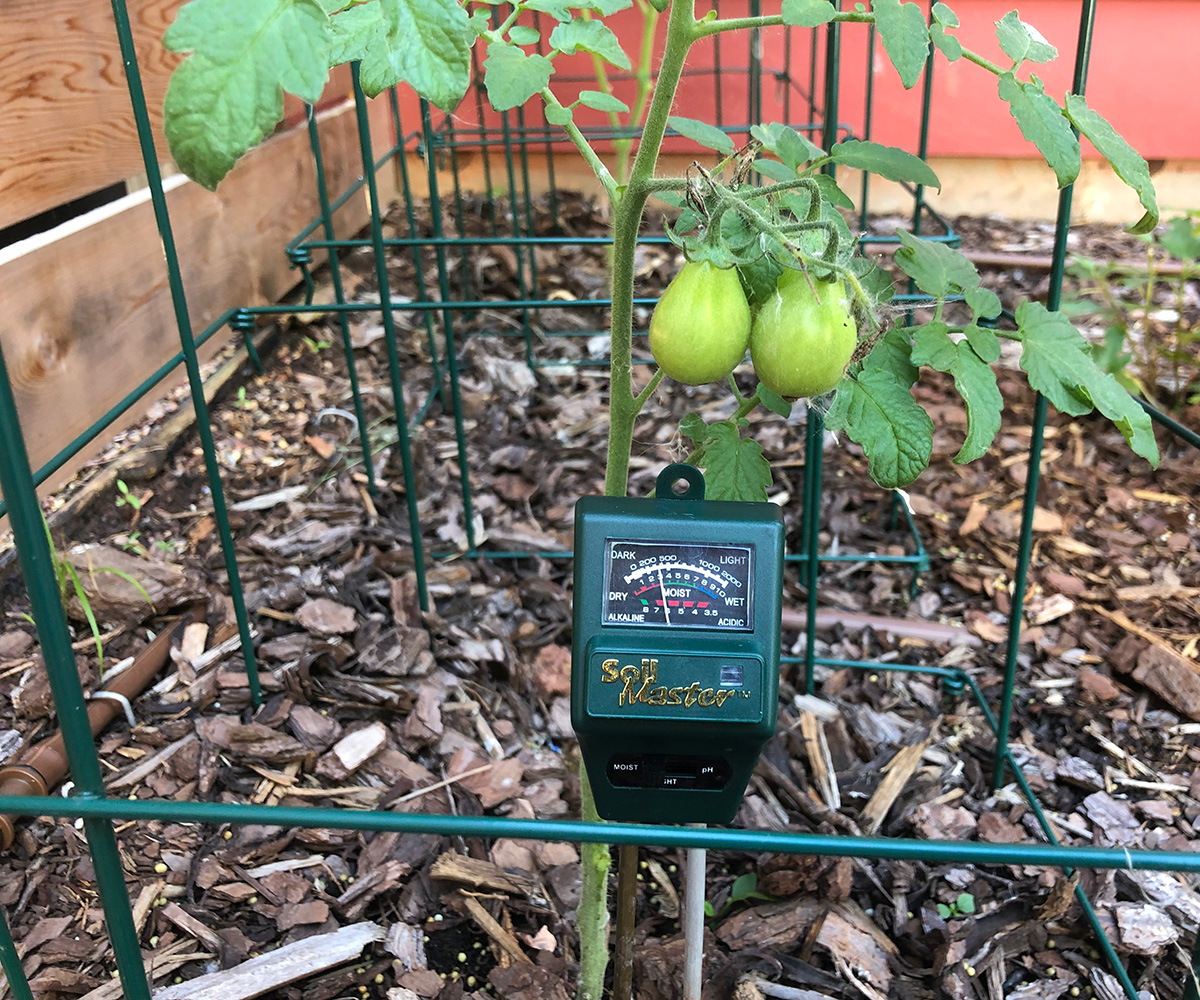
Maintain steady irrigation
Inadequate soil moisture can cause plant stress that leads to blossom drop. Tomato plants require 1 to 2 inches of water each week. Manage an evenly moist soil to promote a deep root system, but avoid overwatering, which can suffocate roots. The best way to know when you need to water is to check the soil with your finger. If the soil is dry an inch down, it’s time to water. During fruit set, pay particular attention to soil moisture. Fluctuations in soil moisture cause fruits to grow in bursts, stretching the skin to a point where it cracks. Cracked fruits are more prone to disease development. Mulching around tomato plants with straw, compost, or cotton burrs can help moderate soil temperature and maintain soil moisture.
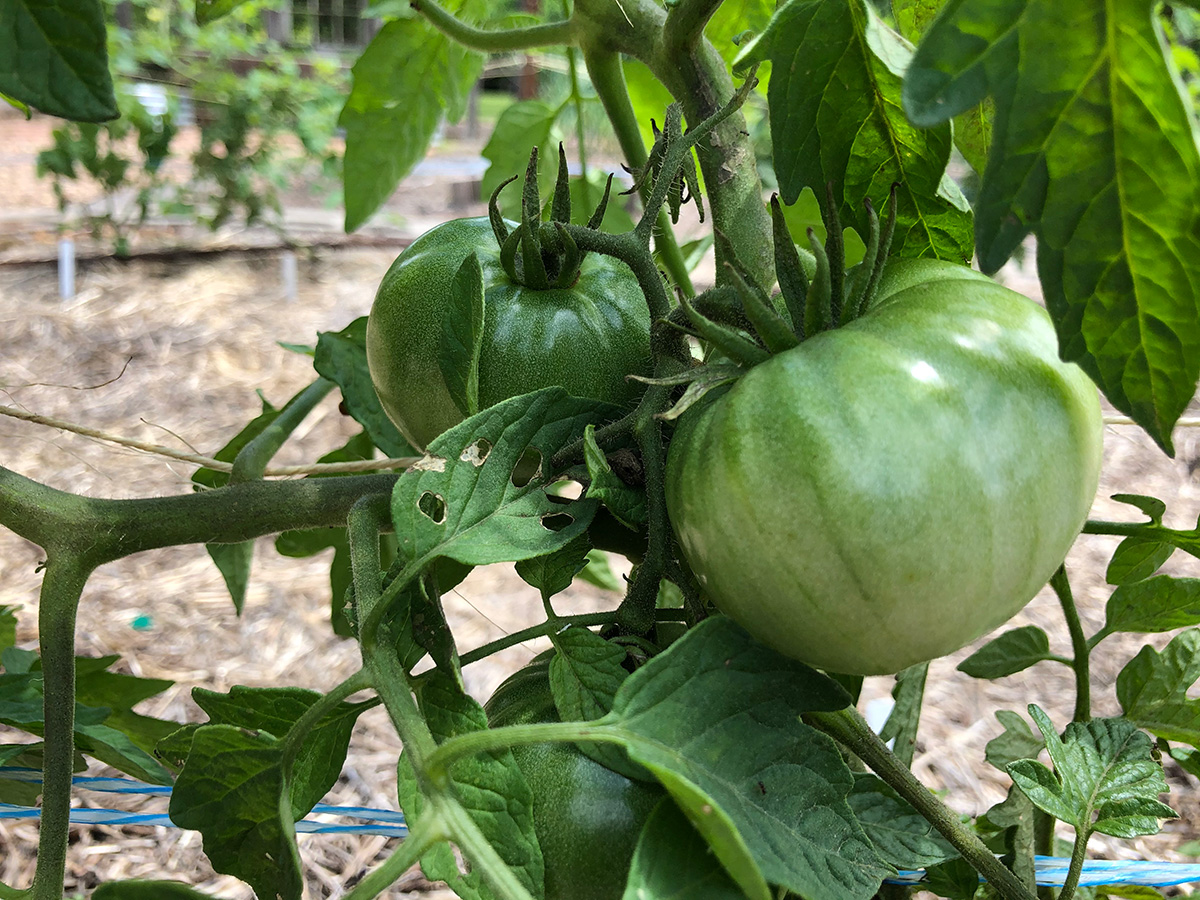
Getting fruits to set is only half the battle. Sometimes fruits fail to ripen during a heatwave. If you find fruits refusing to turn red, harvest them on the orange (or even green) side, and let them finish ripening on the countertop.
—Kim Toscano is a horticulturalist, entomologist, garden designer, writer, and graphic designer. She previously hosted Oklahoma Gardening, a weekly PBS television program produced by the Oklahoma Cooperative Extension Service.
Fine Gardening Recommended Products
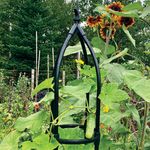
Lee Valley Garden Obelisks
Fine Gardening receives a commission for items purchased through links on this site, including Amazon Associates and other affiliate advertising programs.

Gilmore Rubber Hose Washer 10pk
Fine Gardening receives a commission for items purchased through links on this site, including Amazon Associates and other affiliate advertising programs.
- Clip of 10

RAINPOINT Sprinkler Timer with Brass Swivel
Fine Gardening receives a commission for items purchased through links on this site, including Amazon Associates and other affiliate advertising programs.
- Built-in metal filter gaskets can prevent sediment and other larger particles
- Through the Sprinkler Timer program, you can set the start time, watering duration, and watering frequency







Comments
Log in or create an account to post a comment.
Sign up Log in